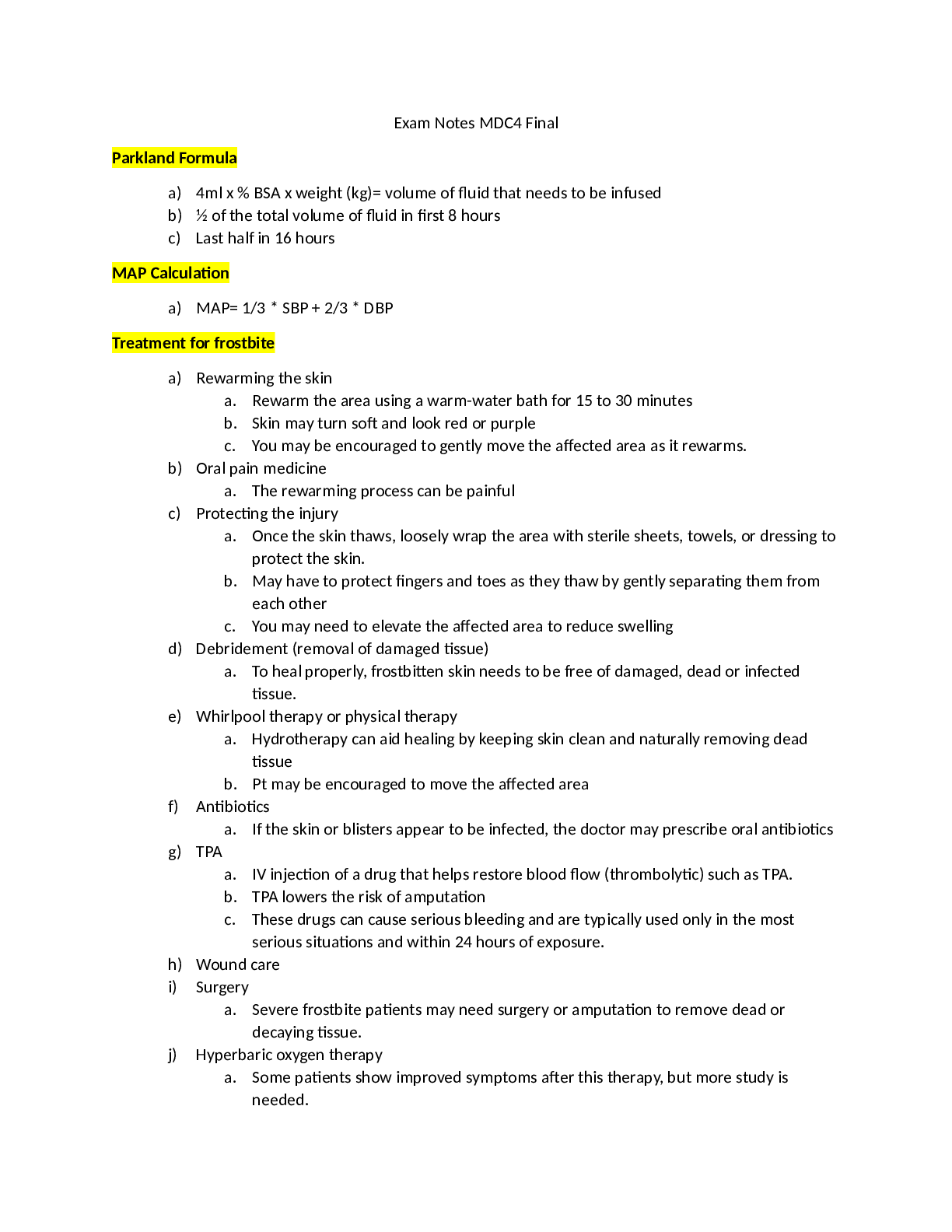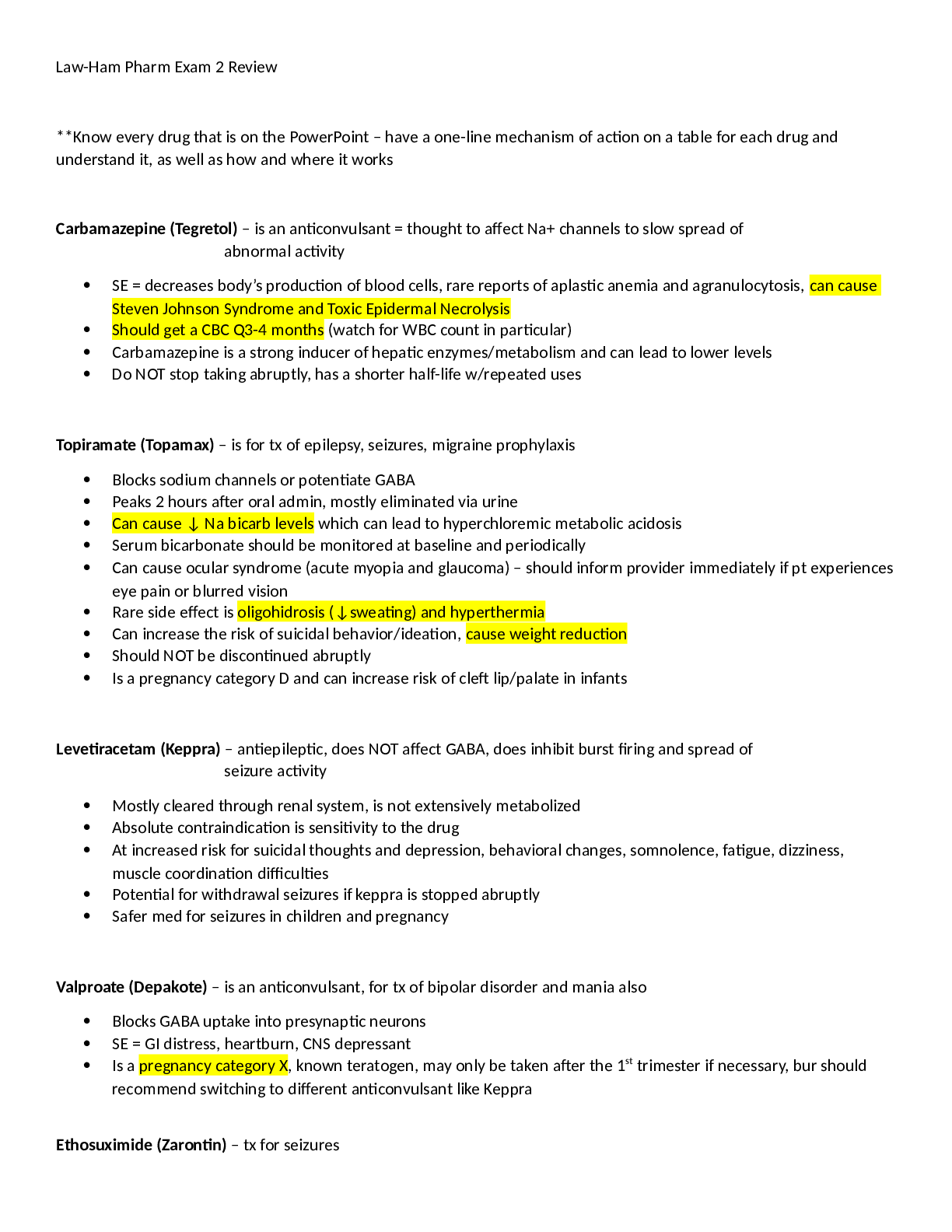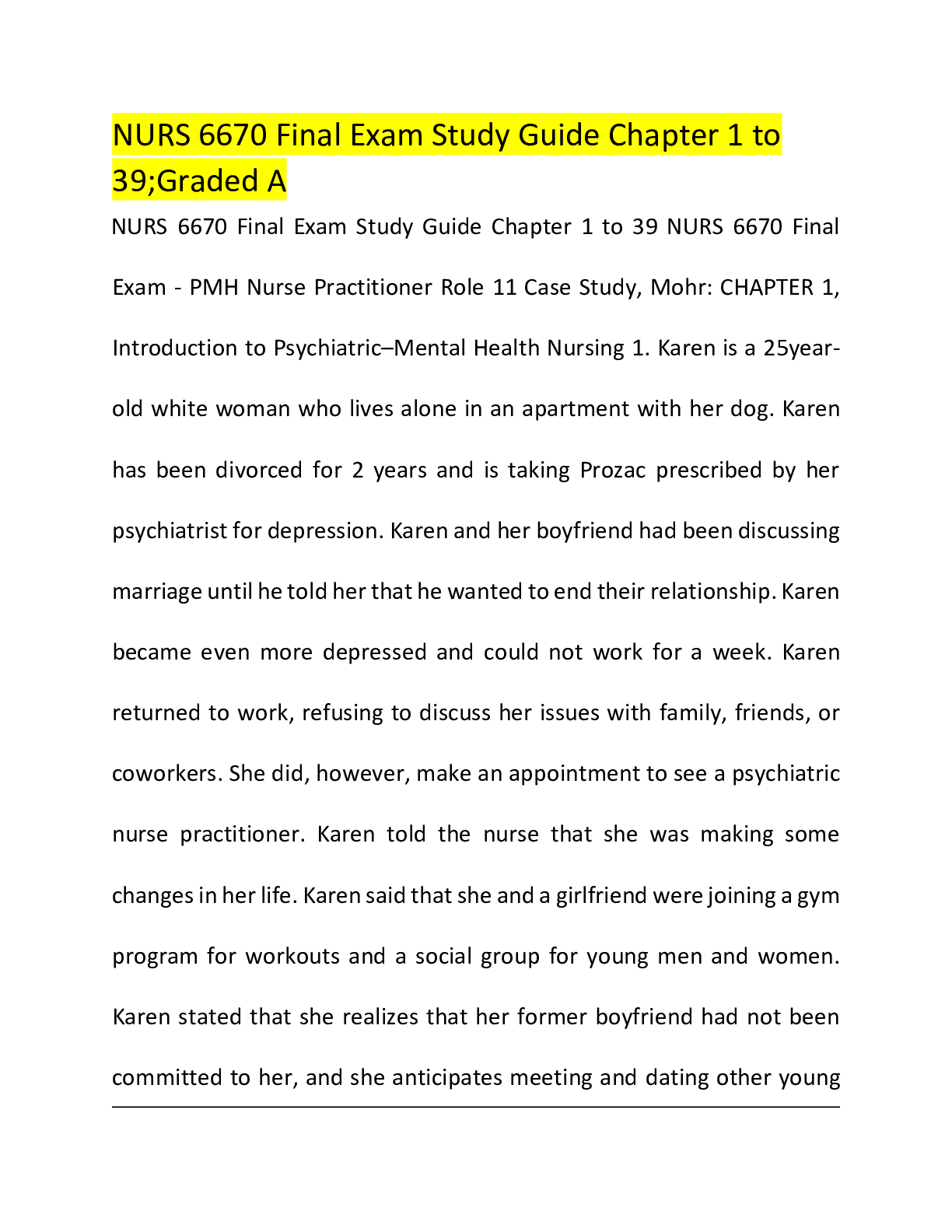Psychology > STUDY GUIDE > PYC3704 Psychological Research Exam Questions and Answers/PYC3704 Psychological Research Test Bank ( (All)
PYC3704 Psychological Research Exam Questions and Answers/PYC3704 Psychological Research Test Bank (A+ Rated): UNISA
Document Content and Description Below
PYC3704 Psychological Research Exam Questions and Answers/PYC3704 Psychological Research Test Bank (A+ Rated) PYC3704 Psychological Research Exam Questions and Answers PYC3704 Psychological Research... Test BankThis document is a compilation of UNISA Exam Questions and Answers Answers are motivated by a combination of: • Short summaries/reasoning regarding the relevant topic(s) in question. (Incorrect options are also marked where applicable, in order to identify and disregard red-herring alternatives) Exams covered are: • 2016 May-June • 2016 October-November • 2017 May-June • 2017 October November • Mock Exam 1 • Mock Exam 2 • Test yourself Questions and Answers from the Study Guide Please note: This document is an additional tool for exam preparation. The Stuvia-user that compiled and uploaded this document takes no responsibility for incorrect answers. Students must ensure that they study the prescribed material and understand the content. May June 2016 Question 1 A theory can be described as an interdependent set of - - - - - relations between - - - - - 1. proposed, constructs 2. empirical, hypotheses 3. verified, variables Answer: The correct option is 1 Reasoning: • Alternative 1 is correct because a theory is defined as a “network of postulated relations between constructs”. • Alternative 2 is wrong because one does not test relations between hypotheses, but between variables. • The relations are postulated (and therefore not verified) so that alternative 3 is also incorrect. Question 2 A measurement model of attention deficit disorder relates this - - - - - to its - - - - - 1. construct, intervening variables 2. hypothetical variable, observable instances 3. variable, parameters Answer: The correct option is 2 Reasoning: • Alternative 2 is correct because (a) ‘attention deficit disorder’ is a hypothetical variable used to refer to a cluster of observable symptoms, and (b) the symptoms are the observable instances (of behaviour) which are used to measure (e.g. indicate the severity) of the disorder. • Alternative 1 is incorrect because one requires manifest, not latent variables for measurement. • Alternative 3 is also incorrect because a model is not a variable, but a theory of the relationship between ‘referents’ (or hypothetical entities). Use the following scenario to answer Questions 3 to 5 "Acute stress disorder among patients who suffer from this disorder can be explained in terms of how the intensity of stress is affected by personality factors, by the nature of the stressors which they experience, and by the support they experience in their social system. My research will investigate whether the level of anxiety of these patients can be reduced by providing social support through group therapy. More specifically, patients receiving group therapy are expected to score lower on the Manifest Anxiety Scale than patients not receiving therapy" Question 3 "Acute stress disorder among patients who suffer from this disorder can be explained in terms of how the intensity of stress is affected by personality factors, by the nature of the stressors which they experience, and by the support they experience in their social system” is a(n) - - - -- 1. hypothesis 2. theory 3. operational definition Answer: The correct option is 2 Question 4 The dependent variable(s) in my research is/are - - - - - 1. personality factors, nature of stressors, support received 2. whether or not group therapy is received 3. level of anxiety experienced by patients Answer: The correct option is 3 Reasoning: In the hypothesis it is indicated the level or intensity of anxiety experienced ‘depends’ on other variables such as personality factors, the nature of the stressors and support experienced in the social system, showing that it functions as a dependent or Y-variable which is to be predicted or explained in the study. [The dependent variable is usually the one that the researcher is interested in, the variable that is the focus of the research. The independent variable is something that the researcher manipulates, to see how this affects the dependent variable (in other words, the dependent variable is dependent on the independent variable).] Question 5 When interpreting the results of this research I will assume that personality factors and the nature of the stressors - - - - - 1. do affect level of anxiety, but their effects more or less cancel out over all my patients in the research sample 2. do not affect level of anxiety 3. do affect level of anxiety, but according to the central limit theorem their average effect will be zero Answer: The correct option is 1 Reasoning: • Alternative 1 is correct because it is obvious that the type of stressor may have an effect on the level of anxiety experienced, but if an unbiased (e.g. random) sample is selected from the population, the influence of the type of stressor will be averaged over the sample. • Alternative 2 is incorrect because there are no grounds for assuming that the type of stressor will not affect anxiety. • Alternative 3 is also incorrect because the central limit theory is not applicable here (it refers to the nature of the sampling distributions of sampling statistics and not to the value of specific variables). Question 6 A psychologist conducts a study in which she measures the reaction times of students doing a psychometric test. She proceeds from the assumption that a fast reaction time is a good indication of high intelligence. In this study 'intelligence' is the - - - - - variable 1. operational 2. latent 3. manifest Answer: The correct option is 2 Reasoning: Intelligence is a latent variable because it cannot be observed directly. The results of the psychometric test can however be observed directly and can therefore be regarded as the manifest variable. Use the following scenario to answer Questions 7 and 8 Jeff's explanation of size perception in the natural environment states that the estimated size of a distant object is affected by its true size, distance from the observer, and transparency of the atmosphere. He decides to investigate whether the claim that estimated size increases with haziness is valid. [Show More]
Last updated: 1 year ago
Preview 1 out of 181 pages
Instant download

Buy this document to get the full access instantly
Instant Download Access after purchase
Add to cartInstant download
Reviews( 0 )
Document information
Connected school, study & course
About the document
Uploaded On
Aug 03, 2021
Number of pages
181
Written in
Additional information
This document has been written for:
Uploaded
Aug 03, 2021
Downloads
0
Views
318

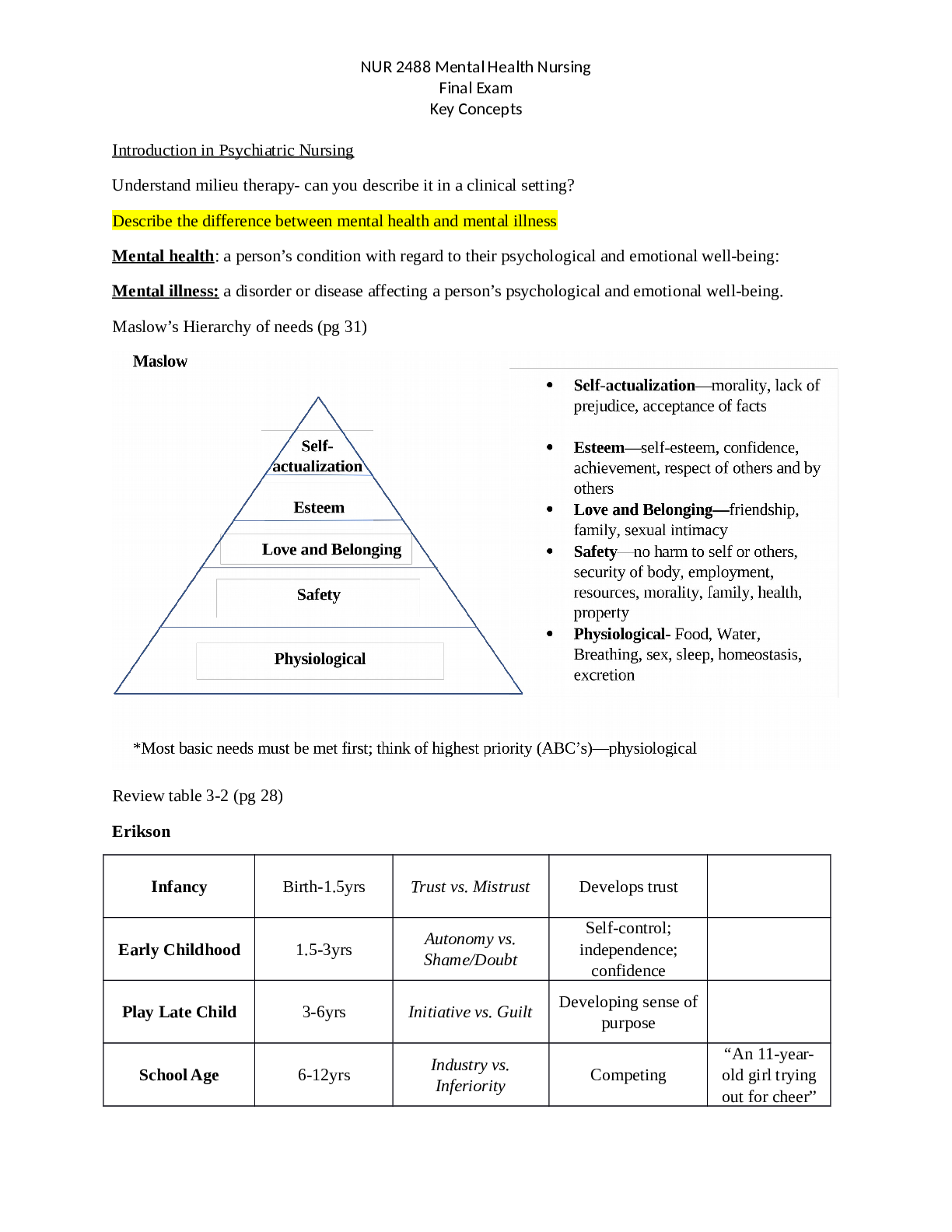
.png)
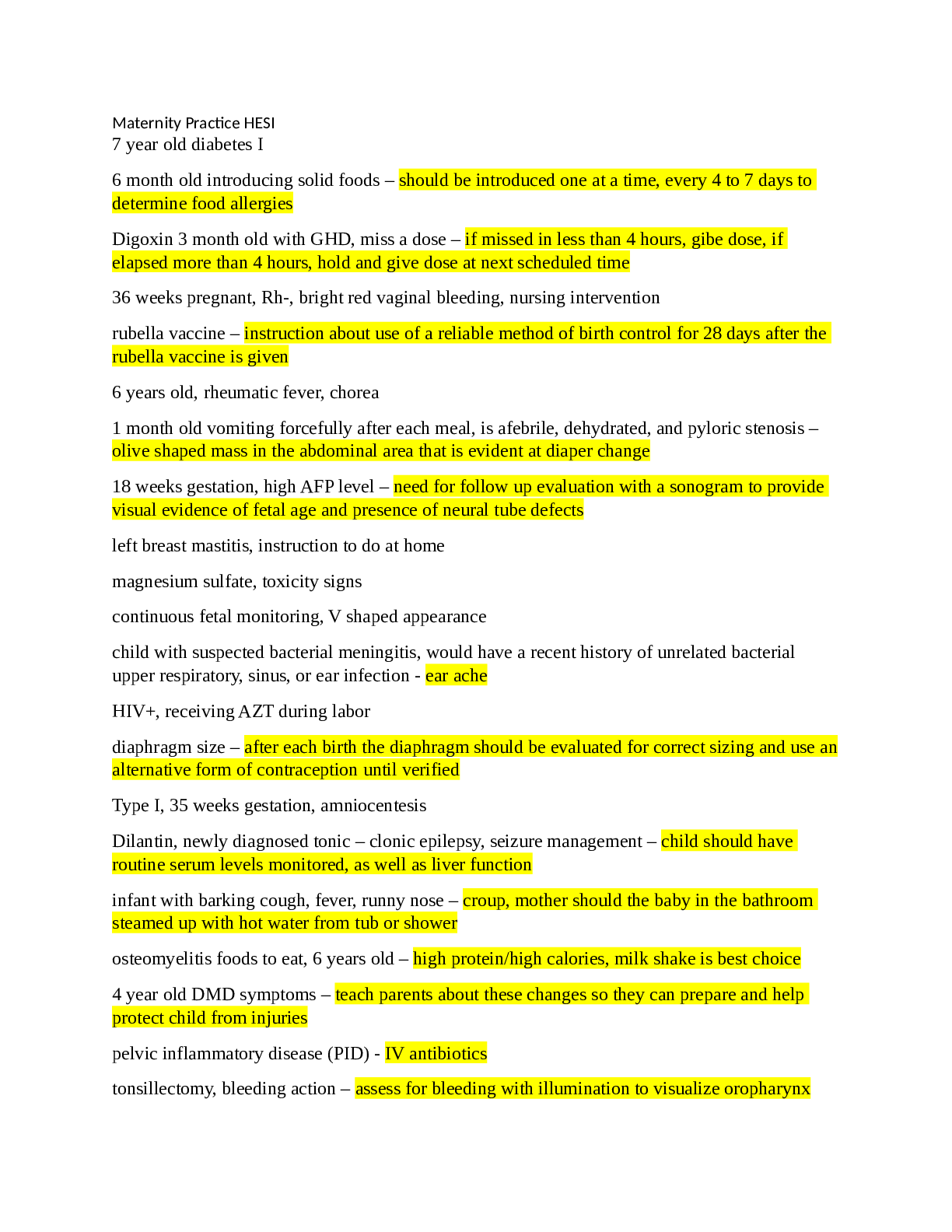
.png)
